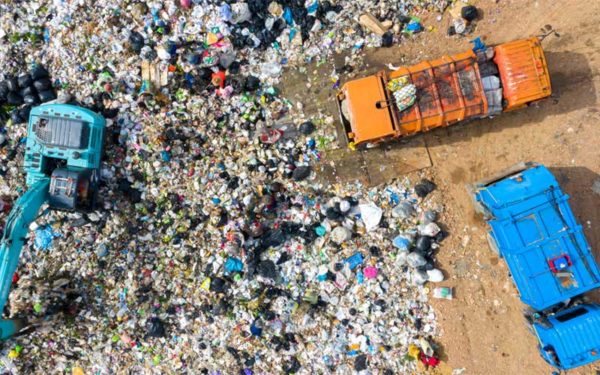
States need to do more to protect New Englangers from toxic chemicals in our drinking water. Photo: Dmitry Naumov via Shutterstock
A version of this blog was published on September 12.
New Englanders can no longer take the safety of our drinking water for granted. The widespread contamination of drinking water supplies in New England and the United States with toxic chemicals has grabbed our attention and forced the question: just how safe is our drinking water?
The short answer to this question is: not safe enough. In the absence of federal safeguards, state regulators have taken some steps to reduce our exposure to dangerous per- and polyfuoroalkyl substances – collectively known as PFAS – in New England. But we can – and we must – do better to protect against the potential hazards lurking in our water.
These Chemicals Put Our Water and Our Health at Risk
Since the mid-20th century, PFAS have been used widely in products that many of us rely on every day – non-stick cookware, water-repellent clothing, stain-resistant fabrics and carpets, some cosmetics, some firefighting foams, and products that resist grease, water, and oil. Today, there are approximately 3,000 or more different kinds of PFAS. These dangerous chemicals do not break down over time; they remain in the environment – and our bloodstreams – for decades, and they are toxic to our health.
Scientific studies show that PFAS may adversely affect growth, learning, and behavior in infants and children, as well as make it more difficult for a woman to get pregnant. PFAS may interfere with natural human hormones and the immune system, increase cholesterol, and disrupt liver, thyroid, and pancreatic function. Researchers also suspect that some PFAS may increase the risk of cancer. No medical interventions will remove PFAS from the body.
Production of at least two kinds of PFAS – perfluorooctanoic acid, or PFOA, and perfluorooctanesulfonic acid, PFOS – has been phased out due to the dangers they pose to human health and the environment. But these chemicals will remain in drinking water sources for decades to come. In the meantime, manufacturers are replacing them with new PFAS that may cause similar adverse health effects – and federal and state regulators simply can’t keep up.
Federal Regulators are Failing to Protect Us
Due to weak federal chemical safety laws, PFAS have largely escaped regulation. That means that manufacturers historically have not had to monitor, let alone report, releases of PFAS into the air, water, or on land.
The Environmental Protection Agency (EPA) and PFAS manufacturers have known about the risks these dangerous chemicals pose for more than a decade, but they have failed to take meaningful action to protect the public. Instead, EPA has allowed manufacturers to continue using them. There is still no federal standard for what is considered a safe amount of PFAS in drinking water.
In effect, PFAS have been “invisible” to regulation – at least until the discovery of widespread contamination of drinking water supplies in New England and across the country.
PFAS Are in New England Waters
PFAS are in waters throughout New England. In Vermont, they’ve been detected in drinking water, groundwater, and surface waters throughout the state and at levels that the Vermont Department of Health has determined are unsafe. In 2016, PFAS from a closed ChemFab planted contaminated more than 300 wells in Bennington County. Drinking water wells tested in Pownal, Clarendon, and Shaftsbury also had unsafe levels of PFAS. And just last month, Vermont regulators reported that drinking water for an elementary school in Grafton had concentrations above those considered safe.
And that’s just in Vermont.
In Massachusetts, PFAS have been found throughout the state, including in drinking and surface water on Cape Cod and in groundwater near the formal Naval Air Station in Weymouth. Drinking water and groundwater in Greenwich, Connecticut, have also been contaminated.
States Must Lead in the Absence of Federal Safeguards
In the absence of federal action, states must act to protect us from this toxic threat to our health and environment. In recent years, some state regulators have taken important steps to address PFAS in drinking water. For example, Vermont has set one of the country’s most stringent health advisories and groundwater cleanup standards for some PFAS, proactively testing drinking and groundwater throughout the state, and forming an Interagency Committee on Chemical Management to help identify how to prevent another drinking water crisis from a previously unknown toxic chemical.
Massachusetts, too, has taken some action, recently creating guidelines for drinking water for five PFAS chemicals. Connecticut has followed suit with guidelines for the same five chemicals.
But without a drinking water rule that requires public water systems to monitor and treat unsafe levels of all PFAS compounds, these actions are not enough to protect New Englanders from PFAS in drinking water.
States can – and must – do more.
That’s why CLF has filed petitions in Vermont, Massachusetts, and Connecticut to demand that state regulators adopt a drinking water standard for all PFAS compounds and require public water systems to conduct regular monitoring and treatment of unsafe levels of PFAS.
CLF has been a champion of clean water in New England for decades. As we work to protect people from the threats posed by PFAS, we want to hear from you. Have you been impacted by polluted drinking water? Write to let us know.




